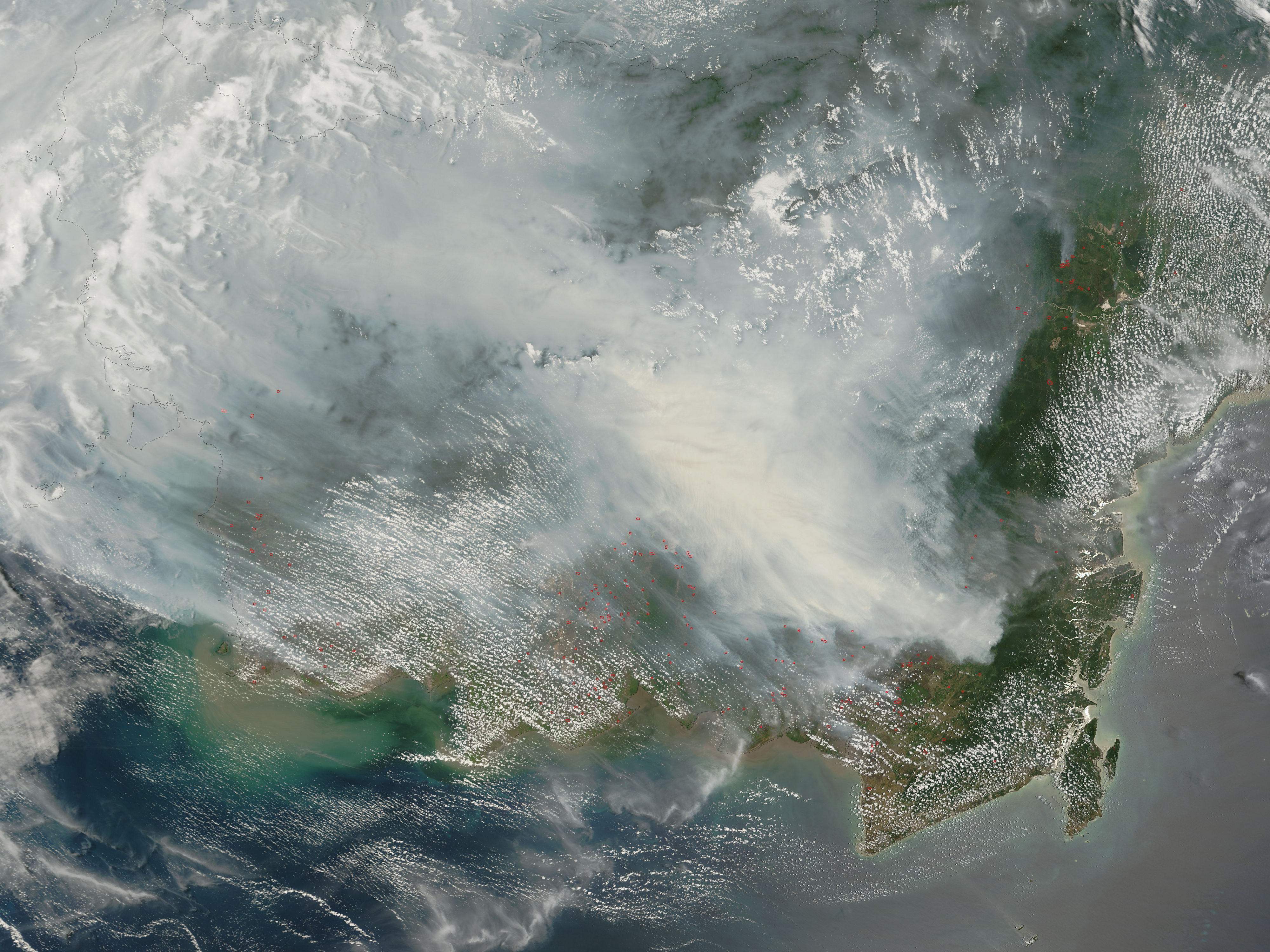Chance for Asia to seize the day
 Below is an excellent article in The Straits Times today that defied conventional wisdom. Sophie's World agrees with the writer especially the point about the Asian financial crisis. The writer said the Asian financial crisis and the sub-prime crisis showed that, again contrary to conventional wisdom, the culprit is the financial system in core countries, namely the US and Europe.
Below is an excellent article in The Straits Times today that defied conventional wisdom. Sophie's World agrees with the writer especially the point about the Asian financial crisis. The writer said the Asian financial crisis and the sub-prime crisis showed that, again contrary to conventional wisdom, the culprit is the financial system in core countries, namely the US and Europe.
Sophie's World had earlier said about the 1997 Asian financial crisis: "True, the crisis was triggered by the Asian countries' flawed policies in some instances. There was no doubt many Asian countries had to reform their faulty economic and political systems then. But the foreign and mainly Western capital must also share the blame, and be regulated to help avoid sudden and overly destabilising effect on the real economies." Please see earlier posting.
Nobody will forget the famous picture of the International Monetary Fund's Michel Camdessus, with his arms crossed in what was seen as an arrogant gesture, overseeing former Indonesian President Suharto signing the agreement for an IMF bailout package worth nearly US$50 billion. The picture was widely used to personify Asia's loss of its independence following the financial crisis in 1997.
Chance for Asia to seize the day
By Joergen Oerstroem Moeller, For The Straits Times
BECAUSE this year marks the 10th anniversary of the Asian financial crisis, observers were prepared for yet more studies on what went wrong and how to avoid another crisis.
Only a few expected another financial crisis, even though it was common knowledge that the property sector in the US and some other countries had entered a period of 'irrational exuberance' - to borrow the famous phrase used by former Federal Reserve chairman Alan Greenspan.
But even those who expected a reversal of the property cycle did not predict the emergence of a threat to global financial stability, with the likelihood of recession in the United States raising uncertainty about global growth.
There are four lessons to be drawn from these two crises.
Lesson No.1 is that the world is actually less globalised than conventional wisdom tells us.
The financial crisis that began in Japan in early 1990, with nose- diving share prices and a property market locked in stalemate for 15 years, did not really affect other countries. This was so even though Japan's economy was the second biggest in the world.
Similarly, while the recession in the US in the first half of 1991 was felt by other countries, it did not drag the world into recession.
The Asian financial crisis in 1997 was the trigger, not the main reason, for a similar crisis in Russia and some Latin American countries. The US and Europe remained remarkably unaffected.
As for this year's sub-prime mortgage crisis in the US, we have to wait a bit before making a judgment, but so far its contagious effect also seems to be limited.
The conclusion one may draw is that while the world may look globalised, it is in fact regionalised. An economic slowdown in one country is felt by neighbouring countries, especially if they belong to the same economic grouping, but it has a limited impact on the global economy. The reason being that regional intra-trade as a share of total trade is high and growing, while dependence on other regions and/or countries is less important.
Intra-European trade comes to about two-thirds of all trade for the European countries. Exports to the US account for only 3 per cent of total European GDP.
Business cycles
LESSON No.2 is that while the business cycles of adjacent countries, and of countries inside the same grouping, tend to converge, the global picture is different.
Many observers expect globalisation and growing trade to synchronise business cycles, but the figures tell another story. International trade amounts to only 31 per cent of global GDP. For most countries, domestic consumption and investment are more important as economic pacesetters. The domestic business cycle is more insulated from outside effects than is widely believed.
This may change, as trade grows faster than GDP, but it will be some time before it rivals consumption and investment.
For the 15 years from 1991 to 2005 there were only four years (1993, 1994, 2001 and 2004) when economic growth in the three major economies (US, eurozone and Japan) moved in the same direction.
If the analysis is narrowed to the US and the eurozone, the business cycle moved in synchronisation in six years out of 15 (1993, 1994, 1995, 1997, 2001 and 2004). Economists may qualify these observations with theories about time-lag etc, but even that does not contradict the conclusion that, contrary to conventional wisdom, the global business cycle is a myth. The global economy is actually controlled by national and regional business cycles.
Lesson No.3 touches on the vulnerability and fragility of financial systems.
The Asian financial crisis and the sub-prime crisis showed that, again contrary to conventional wisdom, the culprit is the financial system in core countries, namely the US and Europe.
They have been irresponsible over due diligence, financial management and corporate governance. Instead, resting on the laurels of their established reputations, they went in blind pursuit of profit and market share without balancing risks against gains.
The Asian financial crisis, as we know now, was due to short- term borrowings (denominated in foreign currencies) to finance long -term investments with income denominated in national currencies. Financial institutions in core countries lending to Asian countries were the guardians of the international financial system.
This role should have compelled them to act as good corporate citizens. Instead they started a race among themselves for short-term profit. When problems arose they jumped out and left the borrower and the international institutions to pull the chestnuts out of the fire, devoting most of their efforts to avoiding losses.
The sub-prime crisis reveals the same behaviour. Financial institutions stepped in to lend without performing the necessary scrutiny. They gambled upon continually rising property prices as collateral for revolving credits, as if the perpetual moving machine had finally been invented - by them!
In both cases, some of the world's most prestigious financial institutions allowed themselves to enter into deals which, by their own rules, were indefensible.
Lack of judgment NOTE the lack of judgment by all core financial institutions in core countries. It was not the financial systems in developing or newly industrialised countries which started the Asian financial crisis. Rather, it was lending from financial institutions in core countries.
NOTE the lack of judgment by all core financial institutions in core countries. It was not the financial systems in developing or newly industrialised countries which started the Asian financial crisis. Rather, it was lending from financial institutions in core countries.
Financial systems in non-core countries have so far - we do not yet know the whole story - weathered the sub-prime crisis far better than their supposedly renowned role models in core countries. To some extent, it may even be that that financial institutions in core countries dragged those in other countries into the mess.
Lesson No.4 is that the prime movers of globalisation are the above financial institutions.
Global capital movements are growing faster than global trade. Over the past 10 years, new financial institutions such as hedge funds and private equity funds have entered the arena and are playing a bigger role.
While the spillover of domestic growth into other countries is limited, the opposite is true for financial operations. Financial institutions are interacting with each other across borders by selling and buying financial instruments. In theory, this distributes risk among many institutions, which in principle should make the system more robust and solid.
But in practice it works the other way, spreading panic as all institutions seek to get out as soon as they smell the risk, knowing that those that get out last will run up the largest losses.
My fifth point is more an observation than a lesson. Most of the world's savings are in Asia. These savings are now being used to rescue or bail out some of the core financial institutions that have had their fingers burnt.
It is not difficult to draw the conclusion that Asian financial institutions, courtesy of the sub- prime crisis, have been given a chance to buy influence in globally established institutions. This will give Asia much stronger control over how its savings are used.
Asia may not have liked seeing financial institutions in the US and Europe earning money while reshuffling wealth originating in Asia, and not being able to do much about it. But now, when these established institutions are on their knees, the chance is there - and it has been taken.
The calamities of the sub-prime mortgage crisis will be temporary. But the impact of the Asian move to gain control over its own savings will be permanent.
The writer is a visiting senior research fellow at the Institute of Southeast Asian Studies, Singapore, and adjunct professor at Copenhagen Business School.
















![[dead.jpg]](http://bp1.blogger.com/_-HUiwp7Jqnc/Rwahu7OaGSI/AAAAAAAAF48/ufaduvfaCYM/s1600/dead.jpg)






 Mokhzani Mahathir - the second son of former Malaysian Prime Minister Dr Mahathir Mohamad - has staged a comeback since he quit the corporate scene six years ago. He appears more focused now, as seen in the Raffles Conversation in The Business Times of Singapore today.
Mokhzani Mahathir - the second son of former Malaysian Prime Minister Dr Mahathir Mohamad - has staged a comeback since he quit the corporate scene six years ago. He appears more focused now, as seen in the Raffles Conversation in The Business Times of Singapore today.


